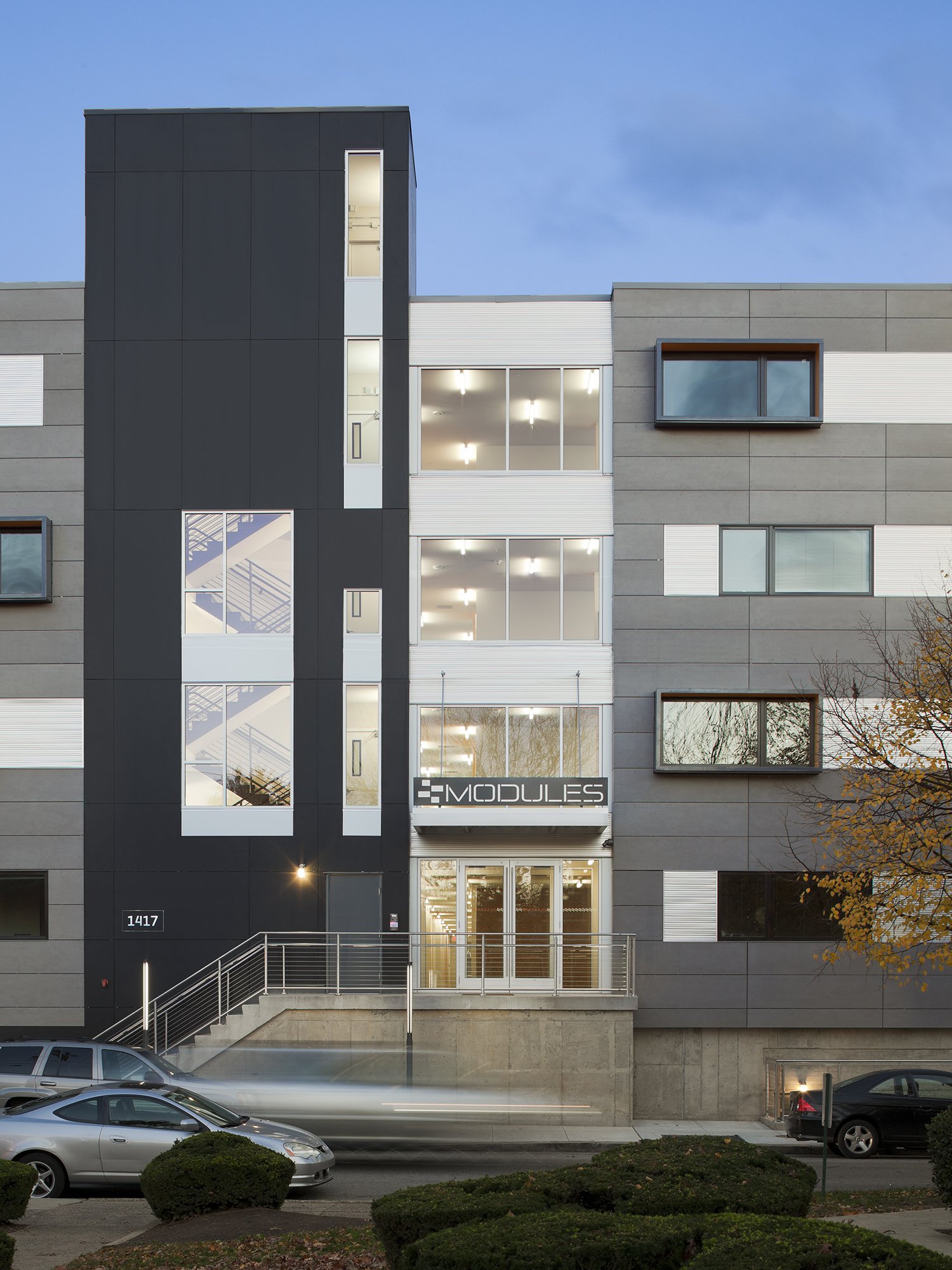The Modules
2010 / Philadelphia, PA
GREEN PREFAB
This 72-unit, 160-bed student apartment building was the largest wood-frame modular project in Philadelphia — and one of the largest prefab LEED-rated multifamily structures in the U.S. — when it was completed in 2010. Situated near Temple University, the project responded to an emerging off-campus student housing market as the school transitioned from a traditionally commuter school to a residential institution. Modular construction emerged as an increasingly attractive option in Philadelphia’s soft housing market, in which expensive construction made it difficult to develop high-quality, sustainable projects. The Modules capitalizes on pre-fabrication as a construction tactic to reduce schedule while delivering a high level of performance on a minimal budget. The design approach embraces prefabrication, finding visual, material and formal identity in the nuances of the modular construction process.
DRIVEN BY SPEED
The project was an exercise in speed and efficiency in design as well as construction, with a 14-month schedule from the beginning of the design process to move-in. More than 80 prefabricated boxes were trucked to the site and craned above a concrete and steel plinth containing ground level lobbies, a controlled-access garage for 38 cars, and covered racks for 100 bicycles.
MODULAR
The double-H building massing was carefully tuned to meet both the requirements of the building’s infill site and the dimensional constraints of its modular systems, maximizing density and perimeter access to light and air. The result is an interior experience with light-filled common spaces, generously-sized operable windows and apartments arranged in quads to encourage socializing. A 15,000 SF green roof terrace manages stormwater, reducing runoff by half while offering dramatic views of the Philadelphia skyline. Additional green elements include a water source heating and cooling system and a highly-insulated building envelope that contribute to a major reduction in the building’s year-round energy consumption.








